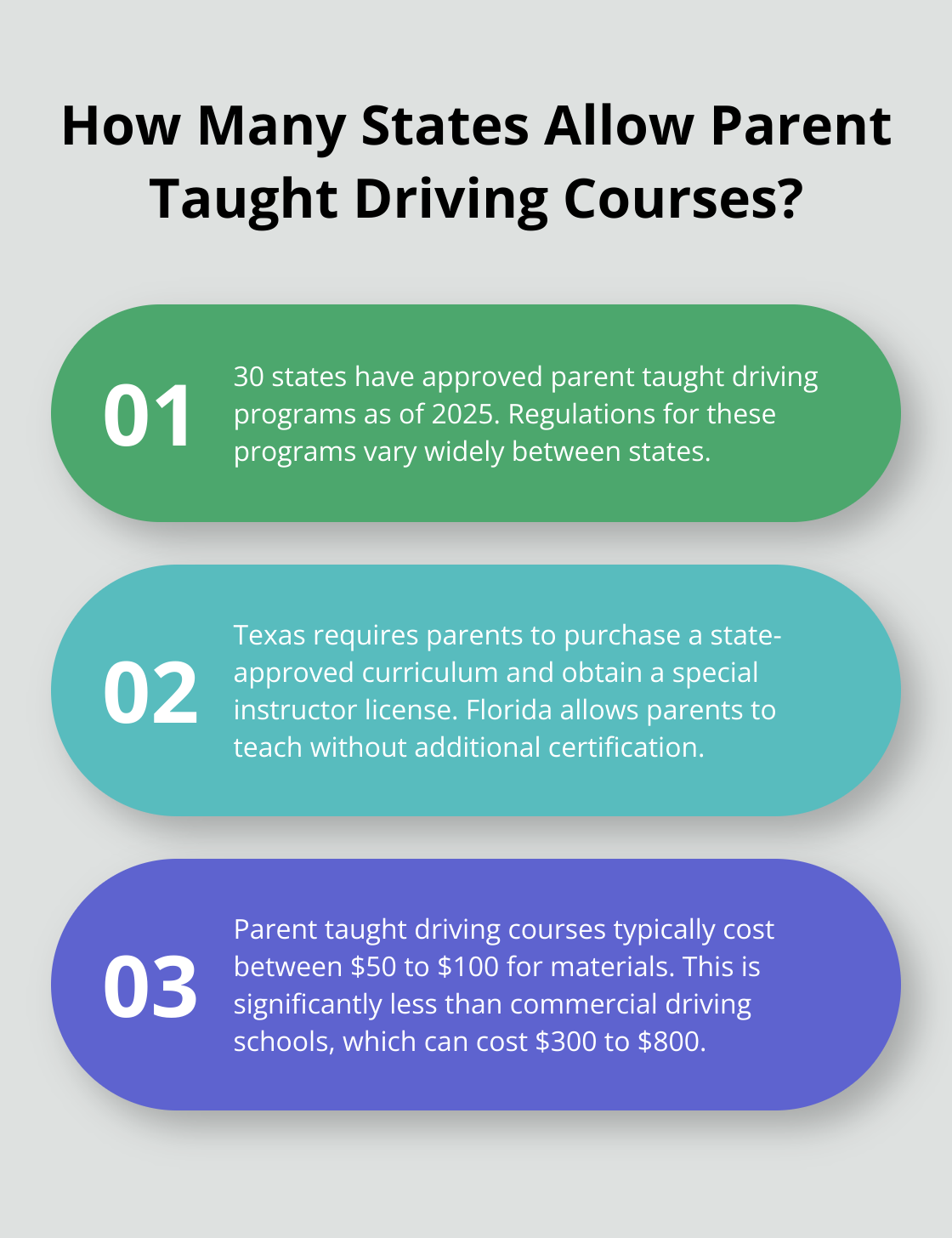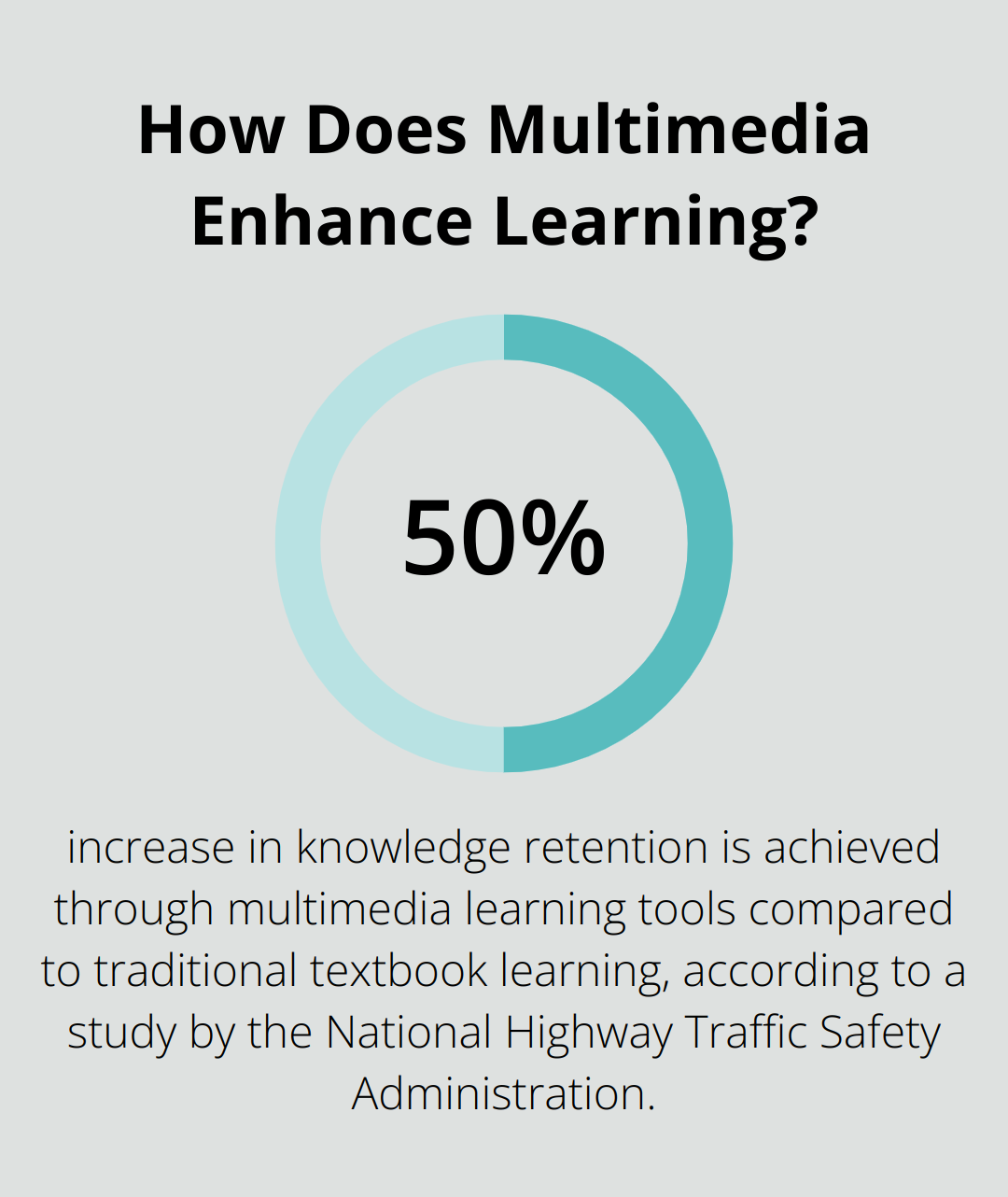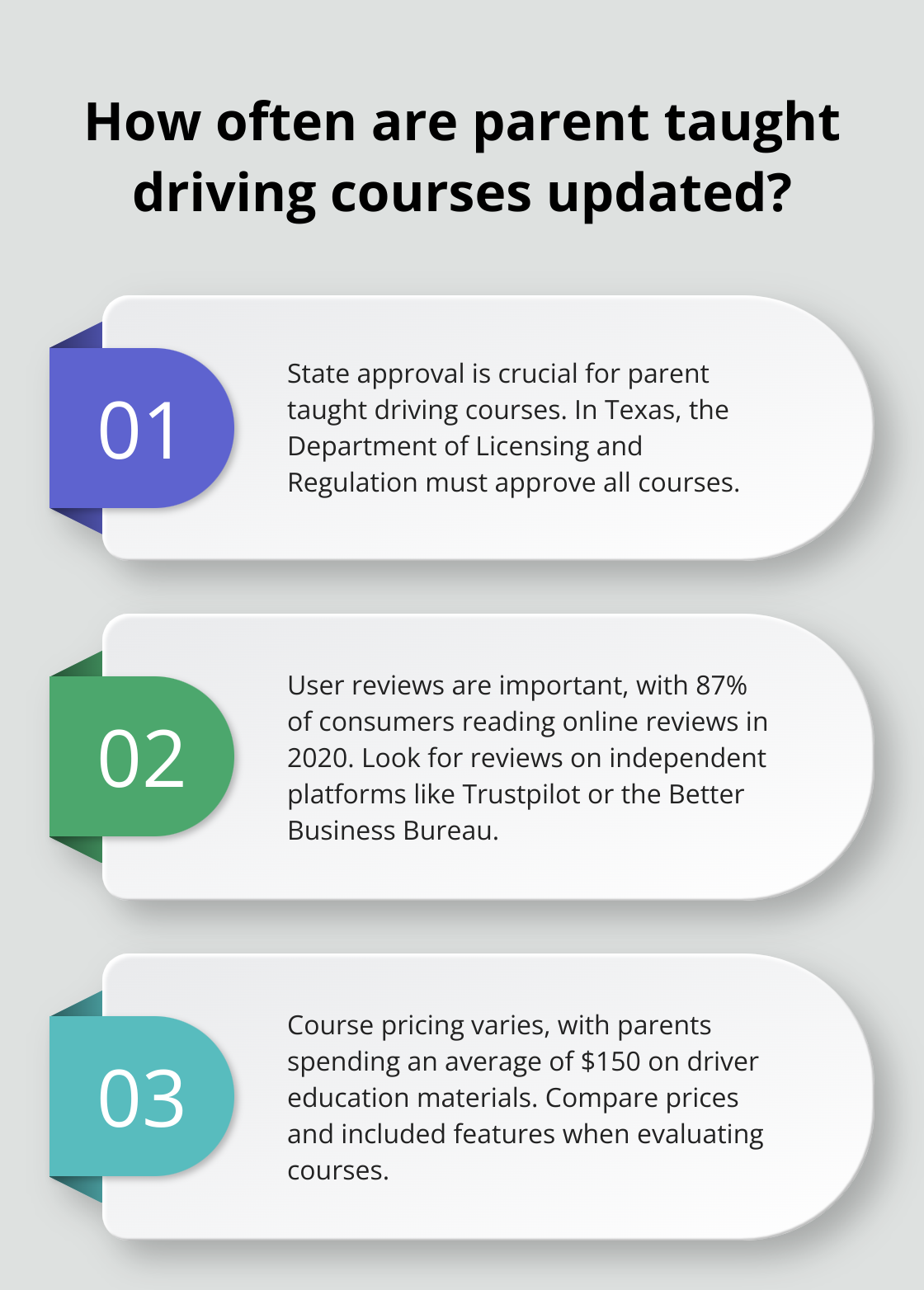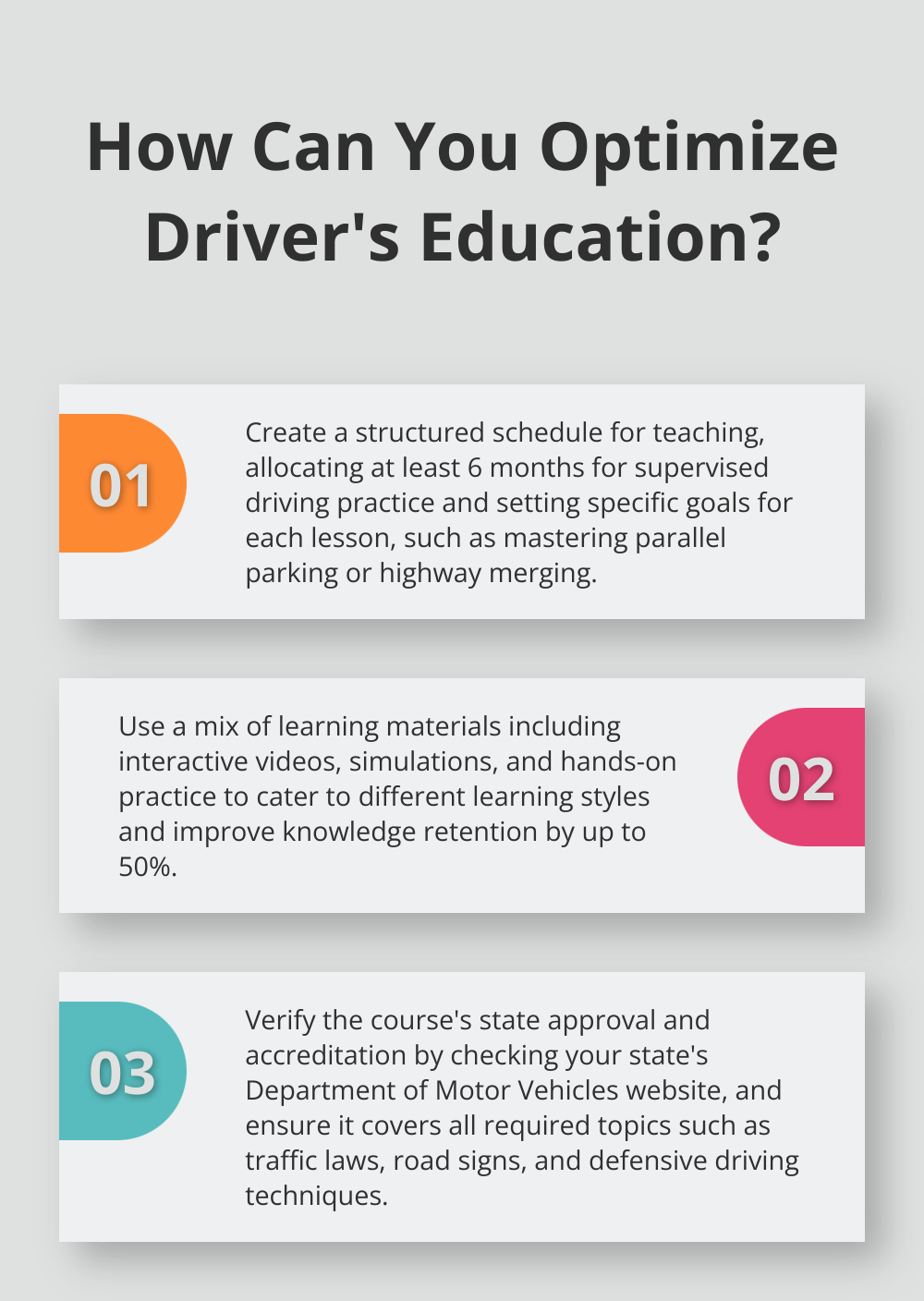How to Choose the Best Parent Taught Driving Course
Choosing the right parent taught driving course can be overwhelming for many families. At The Wiser Driver Driving School, we understand the importance of this decision in shaping a teen’s driving future.
A well-structured parent taught driving course offers flexibility and personalized learning, while ensuring all necessary skills are covered. This guide will help you navigate the options and select the best program for your young driver’s needs.
What Are Parent Taught Driving Courses?
The Basics of Parent Taught Driving
Parent taught driving courses have gained popularity across the United States. These programs empower parents or guardians to become driving instructors for their teens, offering a personalized and flexible approach to driver education.

A parent taught driving course provides a structured program that equips parents with the necessary tools and curriculum to teach their teens how to drive. These courses typically include both classroom instruction and behind-the-wheel training, all administered by the parent. In Texas, for example, the Driver Education Teen course consists of a minimum of 32 hours of classroom instruction, 7 hours of in-car observation, and 7 hours of behind the wheel instruction.
Navigating Legal Requirements
Not all states allow parent taught driving courses. As of 2025, 30 states have approved these programs, but regulations vary widely. For example, Texas requires parents to purchase a state-approved curriculum and obtain a special instructor license, while Florida allows parents to teach without additional certification. Parents should always check with their state’s Department of Motor Vehicles for the most up-to-date requirements.
The Advantages of Parent Taught Courses
Parent taught driving courses offer several benefits over traditional driving schools:
- Cost-effectiveness: The average cost of a commercial driving school can range from $300 to $800, while parent taught courses typically cost between $50 to $100 for materials.
- Flexible scheduling: These courses allow teens to learn at their own pace and practice in familiar environments.
- Improved safety outcomes: While specific statistics on crash reduction are not available, research suggests that parental involvement in teen driver education can have positive effects on driving behavior.
Customized Learning Experience
Parent taught courses allow for a tailored approach to driver education. Parents can adapt their teaching methods to suit their teen’s learning style, spend more time on challenging areas, and provide immediate feedback during practice sessions. This personalized attention can lead to a more comprehensive understanding of driving skills and road safety.
Building Strong Parent-Teen Relationships
Teaching a teen to drive can strengthen the bond between parent and child. It provides an opportunity for open communication, trust-building, and shared responsibility. Many families report that the experience of learning to drive together has improved their overall relationship (a benefit that extends beyond the road).
As we move forward, let’s explore the key features to look for when selecting a parent taught driving course. These elements will help ensure you choose a program that meets both legal requirements and your family’s educational needs.
What Makes a Great Parent Taught Driving Course?
Comprehensive Curriculum
A top-notch parent taught driving course covers all essential topics required by your state’s Department of Motor Vehicles. This typically includes traffic laws, road signs, defensive driving techniques, and handling emergency situations. For example, in Texas, the curriculum must include at least 32 hours of classroom instruction. The best courses go beyond the basics, offering in-depth coverage of topics like distracted driving prevention and the effects of alcohol on driving ability.
Engaging Learning Materials
The best courses use a variety of teaching methods to keep students engaged. This might include interactive videos, simulations, and quizzes. A study by the National Highway Traffic Safety Administration found that multimedia learning tools can increase knowledge retention by up to 50% compared to traditional textbook learning. Look for courses that provide a mix of visual, auditory, and kinesthetic learning experiences to cater to different learning styles.
Progress Tracking Tools
Effective parent taught driving courses provide robust tools for tracking your teen’s progress. This might include online dashboards that show completed modules, quiz scores, and areas that need improvement. Some advanced courses even offer virtual reality simulations to assess a student’s decision-making skills in various driving scenarios. These tools help parents gauge their teen’s readiness and identify areas that require additional focus.
Flexible Learning Options
The advantage of parent taught courses lies in their flexibility. Look for programs that allow you to set your own pace and schedule. Some courses offer modular learning, where you can complete sections in any order, while others might have a more structured approach. The key is to find a balance that works for your family’s schedule while ensuring consistent progress.

Consistency remains important despite the flexibility. The AAA Foundation for Traffic Safety recommends supervised driving practice over at least six months. A good course should help you plan and track these practice hours effectively.
Expert Support and Resources
While parent taught courses empower parents to take the lead, access to expert support can prove invaluable. Look for courses that offer resources such as instructor hotlines, online forums, or supplementary materials to address questions or challenges that may arise during the teaching process. This support can help parents feel more confident in their role as instructors and ensure they provide accurate, up-to-date information to their teens.
As you evaluate different parent taught driving courses, consider how they stack up in these key areas. The right course will not only meet legal requirements but also provide a comprehensive, engaging, and flexible learning experience for both parents and teens. Next, we’ll explore how to assess the quality and reputation of these courses to ensure you’re making the best choice for your family.
How to Assess Parent Taught Driving Course Quality
State Approval and Accreditation
The first step in assessing a parent taught driving course is to verify its state approval and accreditation. Each state has specific requirements for driver education programs. For example, in Texas, the Department of Licensing and Regulation (TDLR) must approve all parent taught driver education courses. There are two methods for completing the required instruction: the Concurrent Method, where the student completes six hours of classroom instruction before getting a Learner License, and the Block Method, which requires completion of all 32 hours of classroom instruction before obtaining the license. Check your state’s Department of Motor Vehicles website for a list of approved courses. An accredited program ensures that your teen’s education meets all legal requirements and standards.
User Reviews and Testimonials
User reviews and testimonials provide valuable insights into the real-world effectiveness of a course. Look for reviews on independent platforms like Trustpilot or the Better Business Bureau. Pay attention to comments about the course content, ease of use, and customer support. A study by BrightLocal found that 87% of consumers read online reviews for local businesses in 2020, which highlights the importance of this step in decision-making.
Course Provider Experience
Investigate the course provider’s background and expertise in driver education. Consider how long they have offered parent taught driving courses. Do they have a team of experienced driving instructors or education specialists who develop their curriculum? A provider with a strong track record in driver education is more likely to offer a high-quality, up-to-date course.
Pricing and Value
While cost is a factor, it shouldn’t be the only consideration. Compare the pricing of different courses, but also evaluate what you get for your money. Some courses may have a higher upfront cost but include additional resources like practice tests, mobile apps, or ongoing support. According to a survey by Driving-Tests.org, parents spend an average of $150 on driver education materials (a useful benchmark when evaluating course prices and included features).
Course Content and Updates
Examine the course curriculum closely. Does it cover all required topics comprehensively? Try to find courses that go beyond the basics to include modern driving challenges like distracted driving and sharing the road with autonomous vehicles. The best courses update their content regularly to reflect changes in traffic laws and driving technology. Driver training remains essential even as automated vehicles become more prevalent, as drivers still require manual driving skills when operating these vehicles on the road.

Final Thoughts
Selecting the right parent-taught driving course requires careful consideration of several factors. A comprehensive curriculum, engaging materials, and flexible learning options form the foundation of a quality program. State approval, user reviews, and provider experience also play a significant role in the decision-making process.

The Wiser Driver Driving School offers comprehensive driving programs for all ages, including state-required courses and personalized lessons. We recognize the value of parent-taught options for families who choose that route. Our goal aligns with yours: to produce safe, confident, and responsible drivers.
Your active participation in your teen’s driving education strengthens your relationship and reinforces safe habits. This involvement goes beyond choosing a course; it creates an opportunity to guide your teen through this important milestone. The skills developed now will keep your teen safe on the road for years to come.



